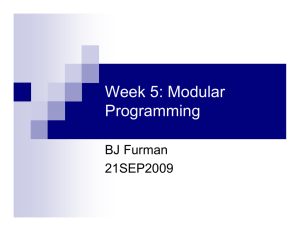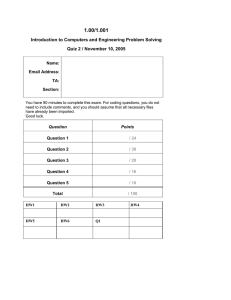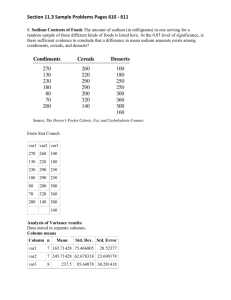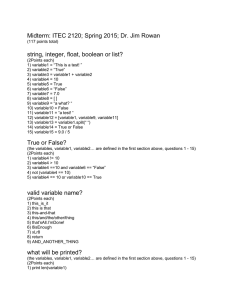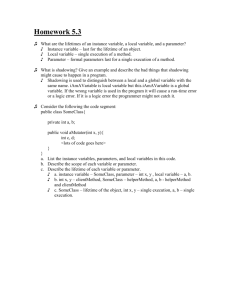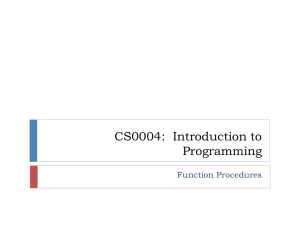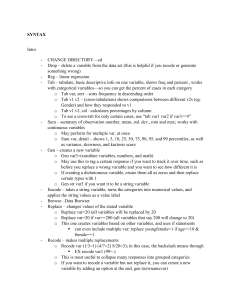Document 11592048
advertisement
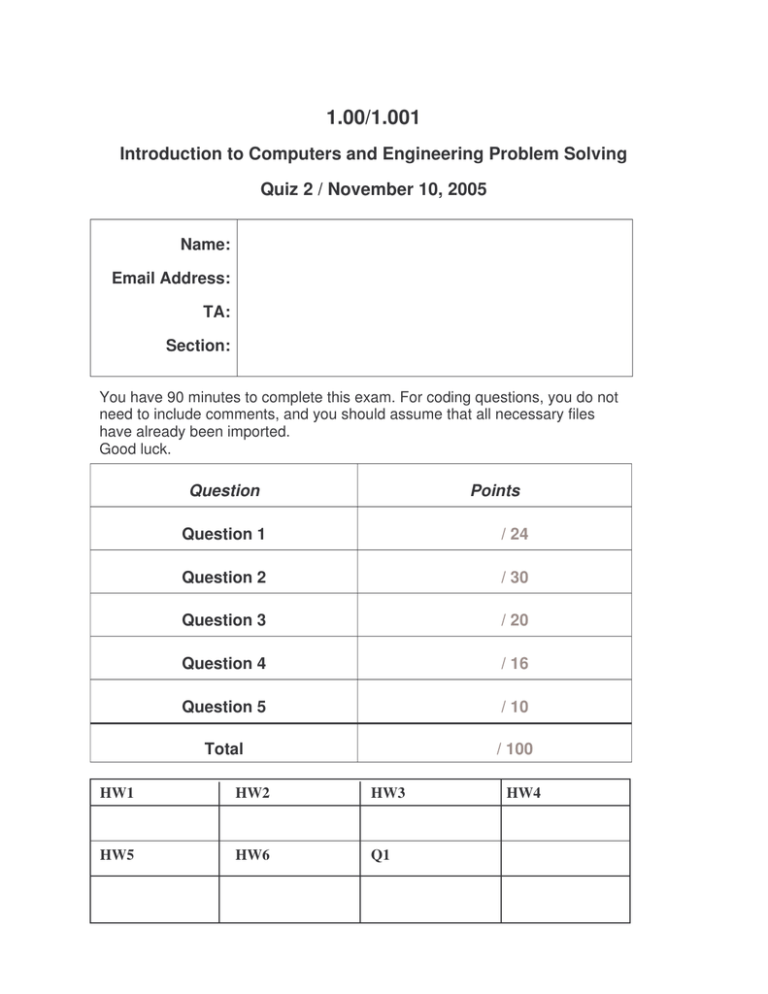
1.00/1.001
Introduction to Computers and Engineering Problem Solving
Quiz 2 / November 10, 2005
Name:
Email Address:
TA:
Section:
You have 90 minutes to complete this exam. For coding questions, you do not
need to include comments, and you should assume that all necessary files
have already been imported.
Good luck.
Question
Points
Question 1
/ 24
Question 2
/ 30
Question 3
/ 20
Question 4
/ 16
Question 5
/ 10
Total
/ 100
HW1
HW2
HW3
HW5
HW6
Q1
HW4
Question 1 True/False
1) A class may extend one or more classes.
TRUE
FALSE
2) A class may implement one or more interfaces.
TRUE
FALSE.
The following code fragment is associated with problems 3) and 4)
public abstract class SomeClass{
public SomeClass(){
//implementation not shown
}
//remainder of implementation not shown
}
public interface SomeInterface{
//declarations not shown
}
3) The statement
SomeClass c = new SomeClass();
will not compile in Java.
TRUE
FALSE
4) The statement
SomeInterface i = new SomeInterface();
will not compile in Java.
TRUE
FALSE
5) Events in Java are objects that are created by Event Sources (such as JButtons,
JPanels, and other Components).
TRUE
FALSE
6) Each Event Listener (for example, a class that implements the ActionListener
interface) can only register to receive Events from one Event Source (for example,
one JButton).
TRUE
FALSE
7) Multiple different Event Listeners can register to receive Events from the same Event
Source.
TRUE
FALSE
8) You want to extend JPanel to make a new class that draws a smiley face in the middle
of the JPanel. Where should you put your drawing code? Circle all that choices that
apply:
a) the repaint() method
b) the constructor
c) the paintComponent(Graphics g) method
d) none of the above
Question 2 - Inheritance and Interfaces
QuizClass, QuizClass2 and QuizInterface are all in the same package. However,
QuizClass and QuizInterface are incomplete. Read and complete the code fragments
below for QuizClass and QuizInterface.
//QuizClass.java
public abstract class QuizClass{
protected double var1;
public static final int CONS1=10;
private float var2;
public QuizClass(double var1, float var2){
/*Part 1: complete the constructor,
initializing the var1 and var2 data members*/
}
public double getVar1(){
return var1;
}
public float getVar2(){
return var2;
}
/*Part 2: declare an abstract calc1() method that
has no arguments and returns a double*/
//remainder of implementation is not shown
}
//QuizInterface.java
public interface QuizInterface{
double CONS2 = 3.75;
/*Part 3: complete the interface with the signature
of a single method called calc2() that has no
arguments and returns a float*/
}
Now, read the QuizClass2 code and answer the questions that follow.
//QuizClass2.java
public class QuizClass2 extends QuizClass implements
QuizInterface {
private double var3;
public QuizClass2(double var1, float var2, double
var3){
this.var1=var1;
this.var2=var2;
this.var3=var3;
}
//remainder of the implementation is not shown
}
4
As written, the QuizClass2 constructor will cause a compiler error. Describe
the cause of the error below and correct it within the code fragment on the next
page.
_______________________________________________________________
_______________________________________________________________
_______________________________________________________________
_______________________________________________________________
//QuizClass2.java – to be corrected below
public class QuizClass2 extends QuizClass implements
QuizInterface {
private double var3;
public QuizClass2(double var1, float var2, double
var3){
}
//remainder of the implementation is not shown
}
5
Name two methods that must be implemented in QuizClass2.
Method 1: _____________________________________________
Method 2: _____________________________________________
6
List all the data members of QuizClass2 that are either declared within it or
inherited from one or more of its base classes.
_______________________________________________________________
_______________________________________________________________
_______________________________________________________________
_______________________________________________________________
Question 3 - Writing an ActionListener (18 points)
Owattagoo Siam wants to write a class that extends JPanel, and has one JButton that exits
whatever program the JPanel is used in. He decides to call the class ExitPanel. He knows
how to add the JButton, but doesn’t understand Swing Event Handling.
Below is Owattagoo’s ExitPanel class, but it’s missing all the code to make the exit JButton
functional. Fill in the code that he’s missing. Note that there may be extra empty space
below– you don’t have to fill in all of it. There are at least two correct ways to do this, and
they use code in different places. Choose the way that is easiest for you. (Hint: use
ActionListener)
public class ExitPanel extends JPanel
{
private JButton exitButton;
// constructor
public ExitPanel() {
exitButton = new JButton(“Exit”);
this.setLayoutManager(new BoxLayout(this,
BoxLayout.X_AXIS));
this.add(exitButton);
}
// This method contains code to exit the program.
//
this method, or just write this
//
line of code elsewhere if that’s easier.
public void exitProgram() {
System.exit(0);
}
}
Call
Question 4 - Numerical methods & matrices
A symmetric matrix is a square matrix where the entries are symmetric with respect to the
main diagonal (top left to bottom right entries).
The following matrix is an example of a symmetric matrix.
»1 3 5
ÿ
…3 7 9 Ÿ
…
Ÿ
…5 9 11Ÿ⁄
Main diagonal
You should now write the code to construct a symmetric matrix from a given square matrix.
The code should be general, i.e. it should work for an nxn square matrix, and it should be
efficient, in the sense that it should avoid any unnecessary computations. You should convert
the square matrix into a symmetric matrix by changing the elements in the upper triangle
(elements above the main diagonal), based on the lower triangle
»1 2 4
ÿ
For example, if you are given the square matrix ……
3 7 6 ŸŸ ,
…5 9 11Ÿ⁄
»1 3 5
ÿ
the symmetric matrix you should construct would be ……3 7 9
ŸŸ
…5 9
11Ÿ⁄
Fill in the blanks in the makeSymmetricMatrix() method with the code that will allow
you to do this.
public class SquareMatrix {
private int n;
int[][] a;
public SquareMatrix()
{
a = new int[n][n];
}
}
public class SymmetricMatrix {
public static SymmetricMatrix makeSymmetricMatrix (SquareMatrix sm)
{
//Your code goes here
}
}
Question 5 - Stacks
You are given the following implementation of the GenericArrayStack from class:
public class GenericArrayStack<E> implements GenericStack<E>
{
static public final int DEFAULT_CAPACITY = 8;
private E[] stack;
private int top = -1;
private int capacity;
public GenericArrayStack(int cap)
{
capacity = cap;
stack = (E[]) new Object[capacity];
}
public GenericArrayStack()
{
this( DEFAULT_CAPACITY );
}
public boolean isEmpty()
{
return top < 0;
}
public void push(E e)
{
if (++top == capacity)
grow();
stack[top] = e;
}
public E pop()
{
if ( isEmpty() )
throw new EmptyStackException();
else
{
E e = stack[top];
stack[top--] = null;
return e;
}
}
}
The following class uses GenericArrayStack to perform a mathematical operation
specified in main(). Read the class code and then specify the program output in the empty
box at the end.
public class StackFactor {
public static void main(String[] args) {
GenericStack<Integer> fS = factor( 88 );
while ( !fS.isEmpty() )
{
int f = fS.pop();
System.out.println( f );
}
}
public static GenericStack<Integer> factor( int i ) {
GenericStack<Integer> stack =
new GenericArrayStack<Integer>();
int j = 2;
while ( i > 1 )
{
if ( i % j == 0 )
{
i = i / j;
stack.push( j );
}
else
j++;
}
return stack;
}
}
